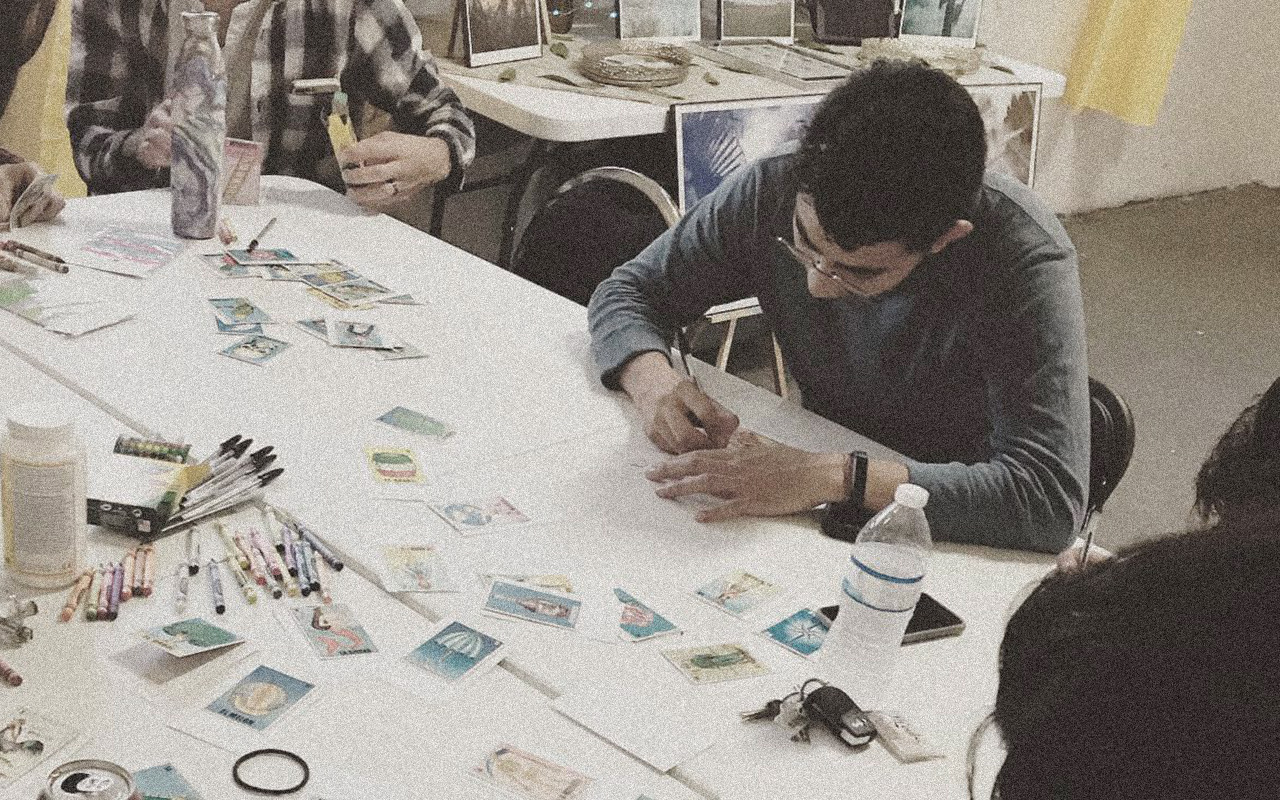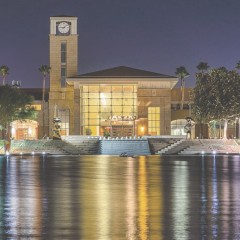This is part of a series of posts about urban planning in the Lower Rio Grande Valley. Read the first in the series here.
Partnerships between poetry, writing, and planning are not new. For instance, the Kelly Writers House at the University of Pennsylvania hosts a lecture series called City Planning and Poetics that invites urban studies scholars, poets, researchers, and other writers discuss the intersections between their work. Dolores Hayden is both an accomplished poet and a celebrated urbanist. Airea D. Matthews is a Yale Younger Poet with a background in public policy whose recent work tackles race and class issues.
The kind of valuable multidisciplinary discussion spearheaded by these poets presents a model for future elaboration in the Rio Grande Valley. Luckily, cognates are already in place that can serve as guides: Las Imaginistas, an arts-based advocacy collective in Brownsville, is a pioneer in this area. It has accomplished valuable work in building knowledge to navigate complex and cumbersome city bureaucracy. Its Taller de Permisos (e.g. “permitting workshops” in English), for instance, helps community vendors and small businesses obtain the knowledge and skills necessary to address permitting regulations by, among other things, using art to deconstruct arcane knowledge into easily interpretable images. The vendors themselves also construct and use art as fully realized members of the participatory process. Workshop sessions are held in both English and Spanish, liberally code switching and building on local vernacular to articulate key points.
There is also the work Texas Poet Laureate Emmy Pérez, who has performed with La Unión del Pueblo Entero (LUPE). LUPE works in colonias and other communities in the lower Rio Grande Valley to enact positive social change through social services and advocacy programs. In the summer of 2020, Pérez and LUPE hosted workshops with families living in colonias. The workshops were taught by accomplished poets and delivered through a virtual setting. Participants wrote about their lived experiences and recorded their writings to preserve as permanent records. They spoke of the spaces they inhabit, the difficulties and pressures of their daily lives, and the possibility of realizing their hopes. Participants connected their identity and heritage to places they live in and call home, advocated for preservation of their way of life, and wrote about the value of their homes and families by using poetry to articulate a vision, to narrate, and to recollect.
Another important effort is the work of Poets Without Walls, a collective that envisions a figurative borderlands without borders. Founded when talk of a border wall’s construction was at a fever pitch during the Trump presidency, Poets Without Walls has engaged the community in various ways: hosting readings, sponsoring poets from other regions of the U.S., organizing workshops, and producing videos and recordings. These efforts not only document the physical and metaphorical borderlands, but encourage participants to re-envision the spaces that have been imposed upon them by land developers, speculators, corporations, federal agencies, and others, and to actively use poetry to combat systemic racism and discriminatory practices. In workshops and recordings, participants carve out the authentic contours of their homes in the Rio Grande Valley against the backdrop of hateful portraits used in the media to strip local residents of their dignity and power. In creating an archive of Valley voices and sharing them through the web and social media channels, Poets Against Walls amplifies the concerns of local communities. The collective serves as a midwife to a vision of the borderlands as a site grounded in family, the natural environment, and strength amid poverty and other adverse conditions.
The poetry workshop serves as an ideal canvas to situate planning activity because of its natural advantages. On a practical level, poetry workshops can be flexibly scheduled and located; they can occur anywhere people can convene with some sort of writing or recording tool. In a place like the RGV, this is crucially important, as institutional sites that are often used for the planning process, such as city halls or offices, can be inaccessible or uninviting.
Poetry workshops are also often generative, which means that participants can both think and create within them, which is not always the case with a public meeting or a design charrette. Poetry workshops can imagine the city as what David Yencken would call a source of emotional satisfaction and creative stimulation. They encourage people to ask critical questions and create narratives that are retrospective, introspective, and prospective. They are also democratically participatory. A workshop facilitator can introduce discussion, but does not have to guide it, and the creative nature of poetry allows free exploration of a variety of topics in new and interesting ways. Participants can conceptualize urban spaces and imagine more just distributions of infrastructure, services, amenities, labor and resources by using the tools of poetry: imagination, conceptual leaps, engagement with language, and play. A product is not the end result of the workshop. Rather, participants both envision the goal and create momentum toward that goal. This effort results in better planning outcomes because it reflects the well-considered beliefs of people who live and work in the particular spaces that the planning process targets. It can also empower communities to advocate, mobilize, and organize for social change and reform—arguably higher rungs in the ladder of citizen control than those established in Sherry Arnstein's influential Ladder of Citizen Participation.
Finally, workshop documents and its conversations can be memorialized in artifacts or coded into the built environment (e.g. see tactical urbanism) via notes, videos, chapbooks, books, and the poetry itself. These can be held as personal items or published in numerous different forums, including in physical spaces (e.g., see the University of Arizona’s collaboration between its Poetry Center and Desert Laboratory on Tumamoc Hill in the Future Climate Proverbs project led by poets Raquel Gutiérrez and Ofelia Zepeda or the Queensbound project that transforms New York City’s Queens borough subways into sites of active poetic expression with in situ readings and other events).
In contrast to the reductive nature of the planning model that attempts to distill public opinion into summaries or conclusions in a formal plan, the product of the workshop is unbound in the world. It can appear in a planning document, but its power is in its accessibility. Because everyone is a poet, the workshop can coax the powerless to use their voice as a source of power.
A strategy such as the poetry workshop may require the government-based planner to become vulnerable, to give up the pretense of possessing specialized knowledge, to move from a top-down bureaucratic mindset to a more equitable and egalitarian one, and to engage the public over the long term in a more authentic and phenomenological approach—that is, one aimed at understanding and incorporating lived experiences. A drawback of even the most participatory planning model is that it often envisions a cleaving between stakeholders and those implementing a planning vision. But the poetry workshop encourages powerbrokers to become co-creators with poets and community members in the poetic space.
As a way forward, planners and other urbanists in the Rio Grande Valley (and elsewhere) would do well to fuse arts and cultural placemaking in the planning process. This entails shaking up status quo public engagement by wresting planning away from a transactional process into a more egalitarian, participatory, and engaging exchange of ideas in ways that elicit creativity and capture the aspirational elements of a community. They can begin the journey by seeking out collaborative efforts with poets, writers, and other artists. This requires developing antennae for the latest events and seeking out the spaces where poets and other artists congregate, discuss, and perform. In a more institutional capacity, they can also serve as sponsors to creative events in nontraditional contexts—bringing poetry into city halls and planning departments and vice versa.
I am indebted to Emmy Pérez and the members of Poets Against Walls, including poets César De León and Celina Gomez, for discussing their work with me. Dr. Enrique E. Figueroa, Professor Emeritus in the Department of Urban Planning at the University of Wisconsin Milwaukee, provided helpful comments and suggestions.
Rodney Gomez is a poet and urbanist. He serves as Executive Director of Parking and Transportation at the University of Texas Rio Grande Valley, where he chaired the planning region’s transit/human services advisory committee. He served as Poet Laureate of McAllen, Texas, and is a board member of NewFound, a nonprofit publisher based in Austin, Texas, that explores how place shapes identity, imagination, and understanding. He is also an advisory editor for FlowerSong Press, an award-winning publisher based in the Rio Grande Valley that produces BIPOC-centered fiction, poetry, and children’s literature. His books include Arsenal with Praise Song, winner of the Helen C. Smith Award for best book of poetry from the Texas Institute of Letters; Ceremony of Sand, awarded the Discovery Prize by the Writers’ League of Texas; and Geographic Tongue, winner of the Pleiades Press Visual Poetry series. His work-in-progress, a collection of poems, lyrics essays, and visual poetry funded through an Academy of American Poets Poet Laureate Fellowship, a Yale Mellon Arts & Practitioner Fellowship, and a De Groot Foundation grant, focuses on precarity and historical violence against Mexican-Americans in the borderlands. A member of the Macondo Writers’ Workshop, Gomez holds a BA from Yale, and both an MPA and MFA from the University of Texas Rio Grande Valley. He lives with his wife and daughter in McAllen, Texas. The views expressed here are his alone.


